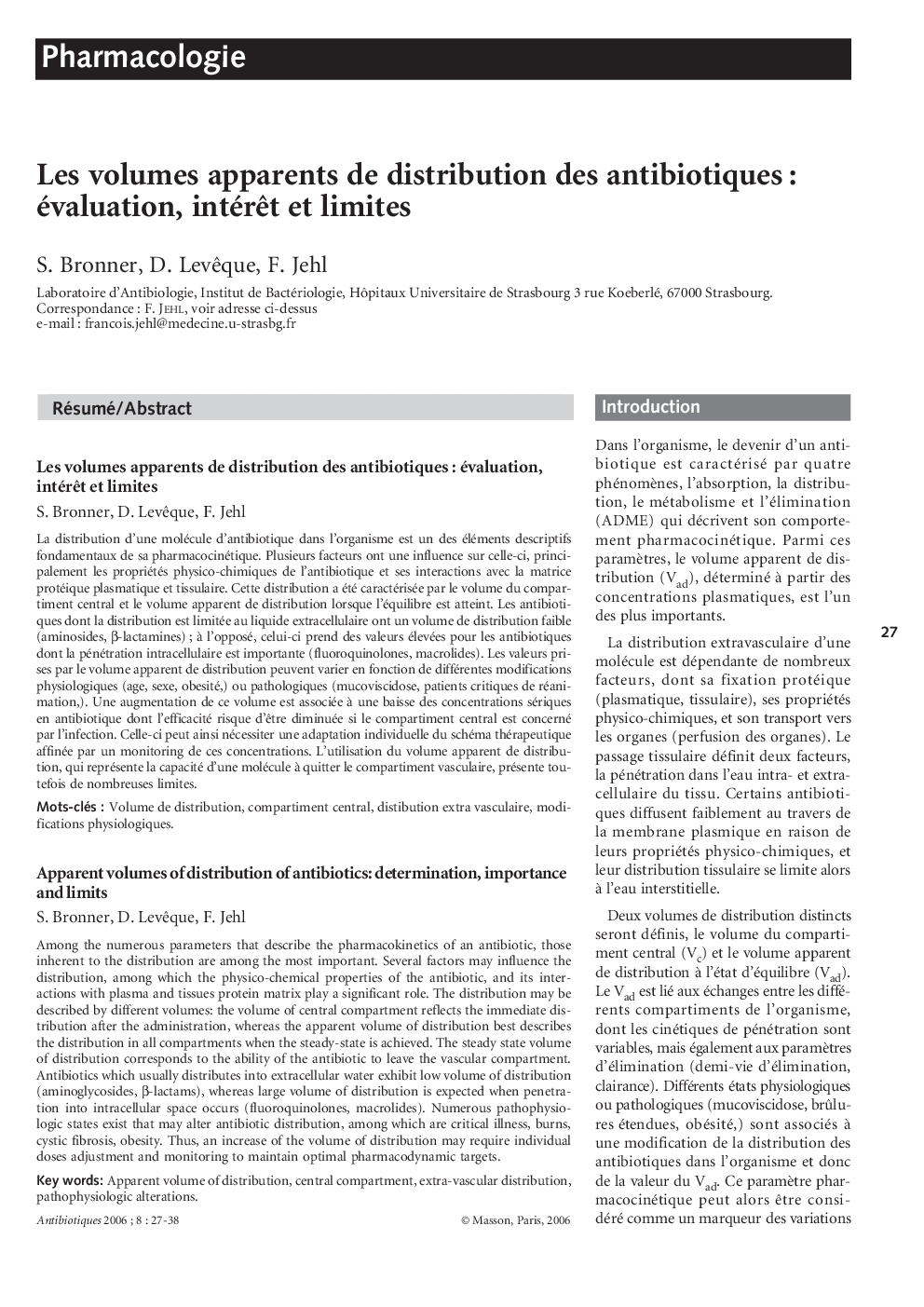| Article ID | Journal | Published Year | Pages | File Type |
|---|---|---|---|---|
| 3396204 | Antibiotiques | 2006 | 12 Pages |
Abstract
Among the numerous parameters that describe the pharmacokinetics of an antibiotic, those inherent to the distribution are among the most important. Several factors may influence the distribution, among which the physico-chemical properties of the antibiotic, and its interactions with plasma and tissues protein matrix play a significant role. The distribution may be described by different volumes: the volume of central compartment reflects the immediate distribution after the administration, whereas the apparent volume of distribution best describes the distribution in all compartments when the steady-state is achieved. The steady state volume of distribution corresponds to the ability of the antibiotic to leave the vascular compartment. Antibiotics which usually distributes into extracellular water exhibit low volume of distribution (aminoglycosides, β-lactams), whereas large volume of distribution is expected when penetration into intracellular space occurs (fluoroquinolones, macrolides). Numerous pathophysiologic states exist that may alter antibiotic distribution, among which are critical illness, burns, cystic fibrosis, obesity. Thus, an increase of the volume of distribution may require individual doses adjustment and monitoring to maintain optimal pharmacodynamic targets.
Keywords
Related Topics
Health Sciences
Medicine and Dentistry
Infectious Diseases
Authors
S. Bronner, D. Levêque, F. Jehl,
